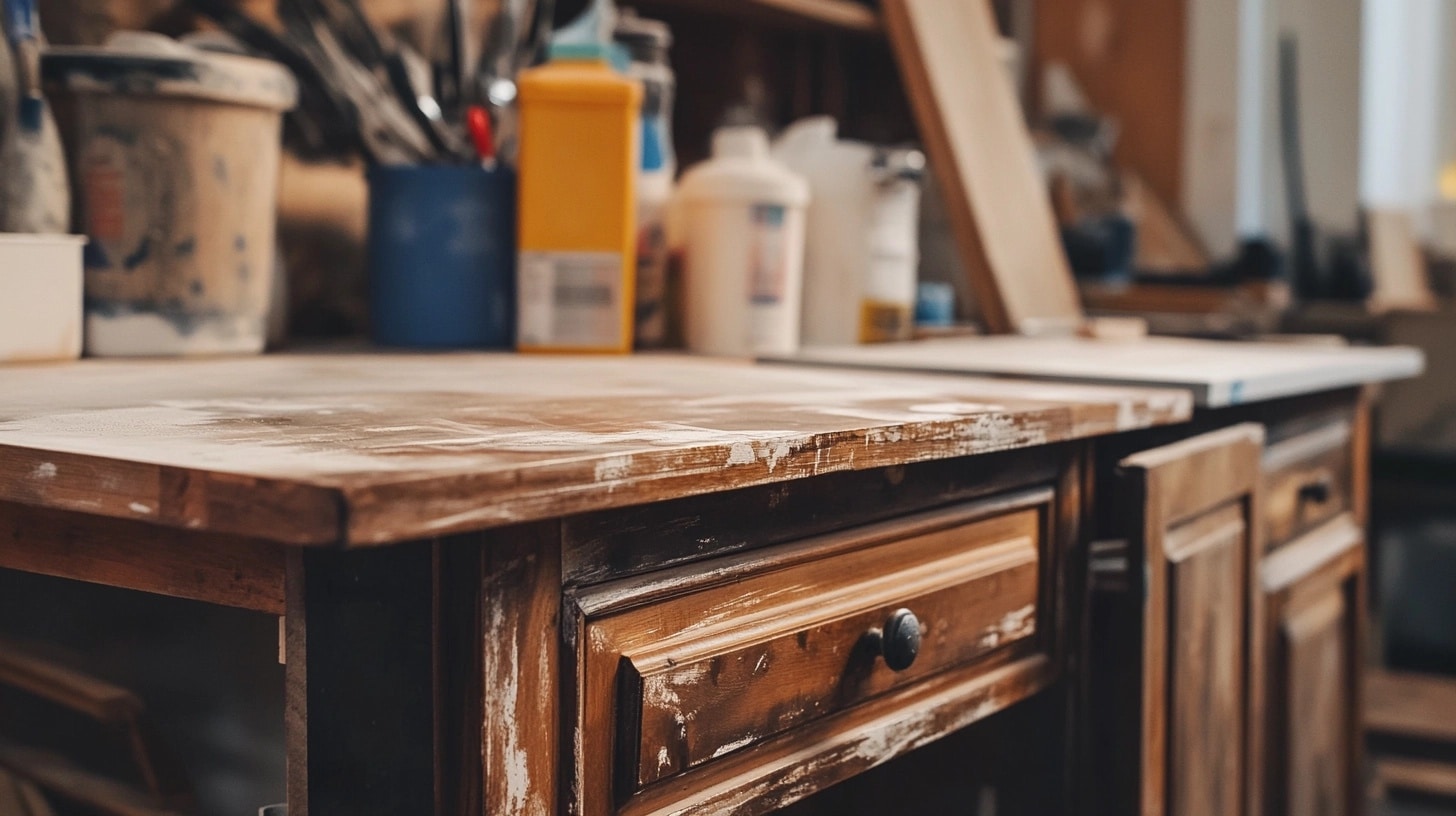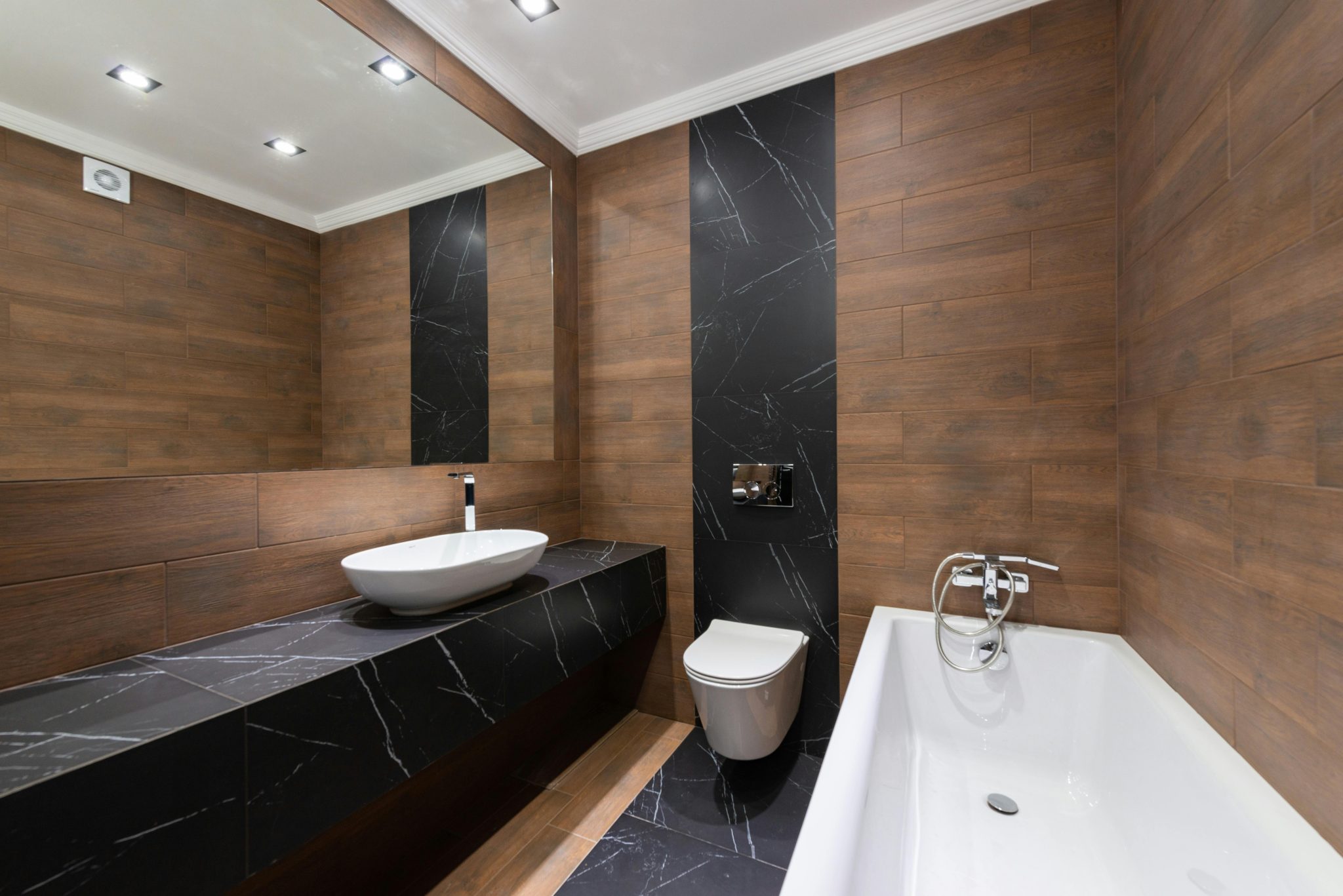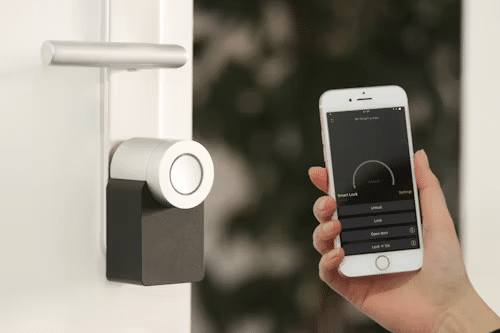Thermofoil 101: The Ultimate Guide to Thermofoil Cabinets
Want to update your kitchen without spending too much? Thermofoil cabinets offer a practical solution for modern homes. These cabinets combine good looks with wallet-friendly prices.
Many homeowners choose thermofoil cabinets today. They serve as an effective alternative to traditional wood options.
The surfaces stay clean with minimal effort. They come in many styles and colors to match your home’s design.
Think of thermofoil as a protective coat for your cabinets. A thin vinyl layer sticks to the cabinet surface through heat.
This method creates smooth, lasting finishes that are cheaper than painted or wood options. Let’s explore why these cabinets might work for your next home project.
What Is Thermofoil?
Thermofoil combines a thin vinyl layer with a wood-like base called MDF (Medium-Density Fiberboard). The name comes from “thermo” for heat and “foil” for thin sheet.
Manufacturers create thermofoil through a special process. They use heat and pressure to bond the vinyl coating onto MDF boards, forming a tight seal between both materials.
MDF’s base material starts as wood fibers mixed with wax and resin. These parts join under pressure, forming a strong foundation for the vinyl coating.
This method differs from simple glue-on coverings. Heat fusion creates a stronger bond than glue alone. The process seals every edge and corner. No gaps or loose spots remain.
The end product gives you cabinet surfaces that look smooth and clean. The finish feels solid, and all pieces colors stay the same.
Cost and Expense Considerations
| FEATURE | THERMOFOIL | LAMINATE | WOOD |
|---|---|---|---|
| Bonding Method | Heat and vacuum pressure | Glue | N/A |
| Water Resistance | High | Moderate | Prone to water damage |
| Maintenance | Low daily upkeep | Moderate upkeep | Regular painting or staining |
| Durability | Moderate | Moderate | High |
| Cost | Lower than wood | Lower than wood | Higher than thermofoil and laminate |
| Repairability | Difficult to repair if damaged | Moderate repair options | Easily touched up |
| Weight | Heavier than wood | Similar to thermofoil | Generally lighter |
| Customization | Retains original look | Limited to the original finish | Can be repainted or stained |
| Best Use | Kitchens, bathrooms | Kitchens, bathrooms, offices | High-end cabinetry, customized finishes |
Applications of Thermofoil
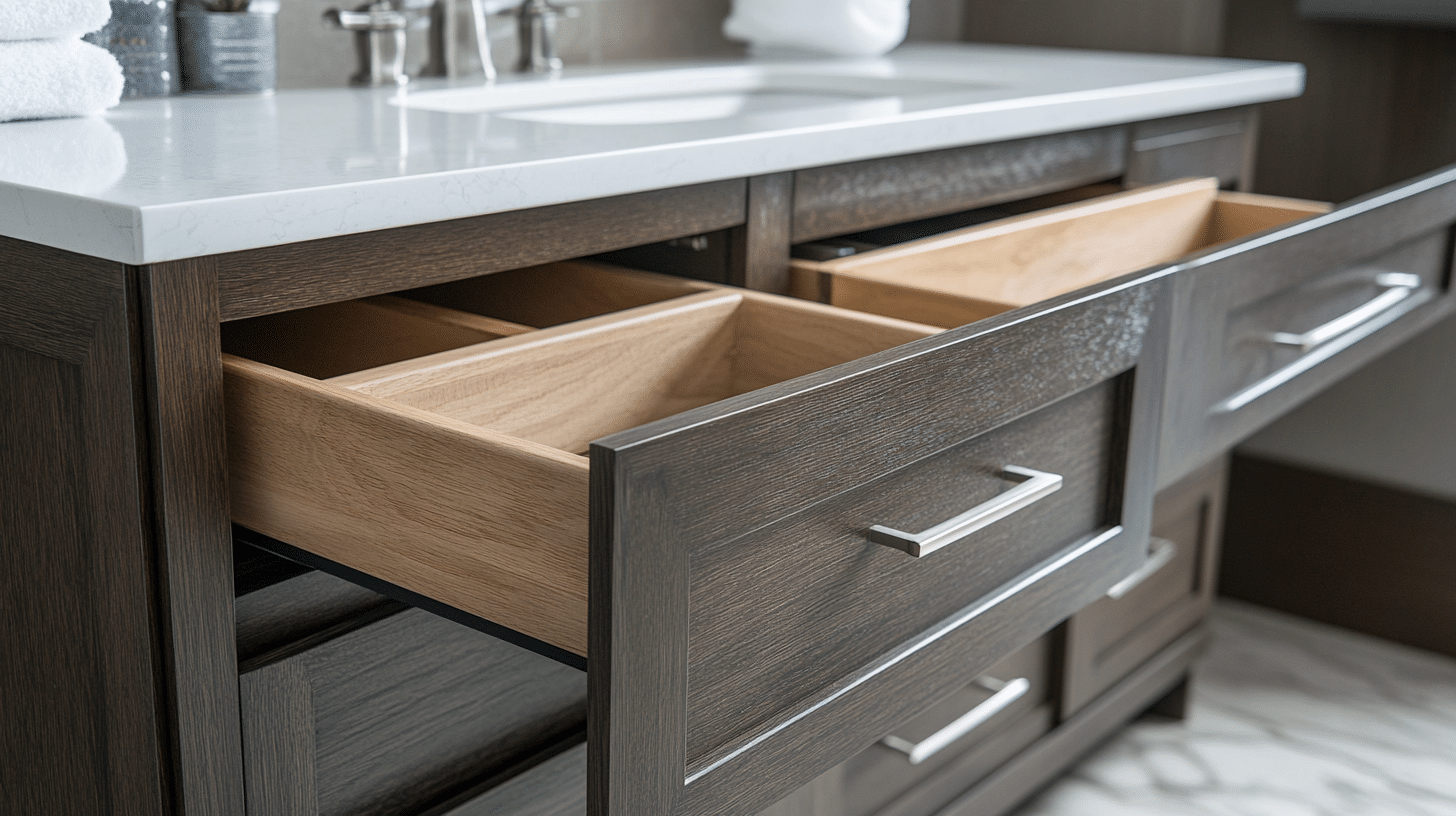
Let’s look at where thermofoil works best in your home.
1. Kitchen Cabinets
- Stands up to daily cooking splashes
- Handles food stains well
- Wipes clean with simple soap
- Fits modern and classic kitchen styles
- Works for both base and wall units
2. Bathroom Vanities
- Resists bathroom moisture
- Keeps its color in steamy conditions
- Stops water from soaking into surfaces
- It makes cleaning quick and simple
- It suits any bathroom size
3. Other Uses
- Makes durable office desks
- Works well for bedroom furniture
- Suits entertainment centers
- Creates lasting closet doors
- Functions in retail store displays
These uses show thermofoil’s range. The material fits many needs while staying budget-friendly.
Remember: Pick spots away from direct heat sources for best results.
Advantages of Thermofoil Cabinets
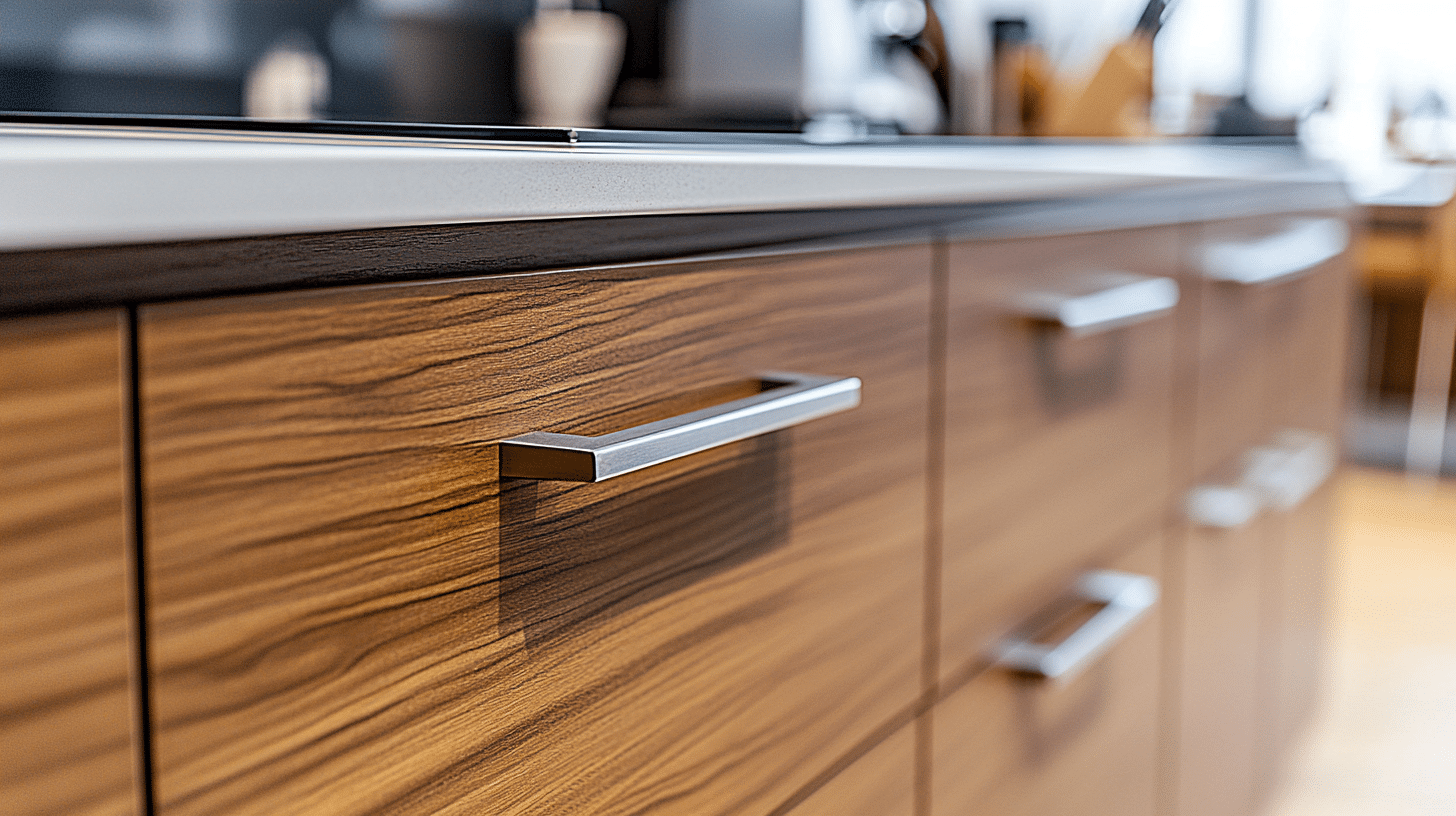
1. Cost-Effective Solution
Money matters when updating your home. Thermofoil cabinets cost much less than wood options. You won’t need to spend extra on paint or special cleaners, making them perfect for home projects with tight budgets.
2. Simple Maintenance
With thermofoil surfaces, daily cleaning becomes simple. A quick wipe with soap and water removes most marks, and the smooth surface prevents stains from setting in.
You won’t waste time scrubbing or using special products. This ease of care saves both time and money.
3. Visual Appeal
These cabinets look good in any setting. You can pick from many colors to match your style. The finish stays even across all surfaces; no spots or patches appear over time. Your cabinets will keep their fresh look for years.
4. Long-Term Value
With proper care, thermofoil cabinets last 15 years or more. They resist water damage better than many materials, and the surfaces don’t need fresh paint or stains. This long life span makes them worth the money spent.
5. Home Enhancement
Thermofoil is suitable for both new and old homes. It is used in kitchens, bathrooms, and other spaces.
The material withstands daily use without losing appeal, allowing your home to gain value without breaking your budget.
Disadvantages of Thermofoil Cabinets
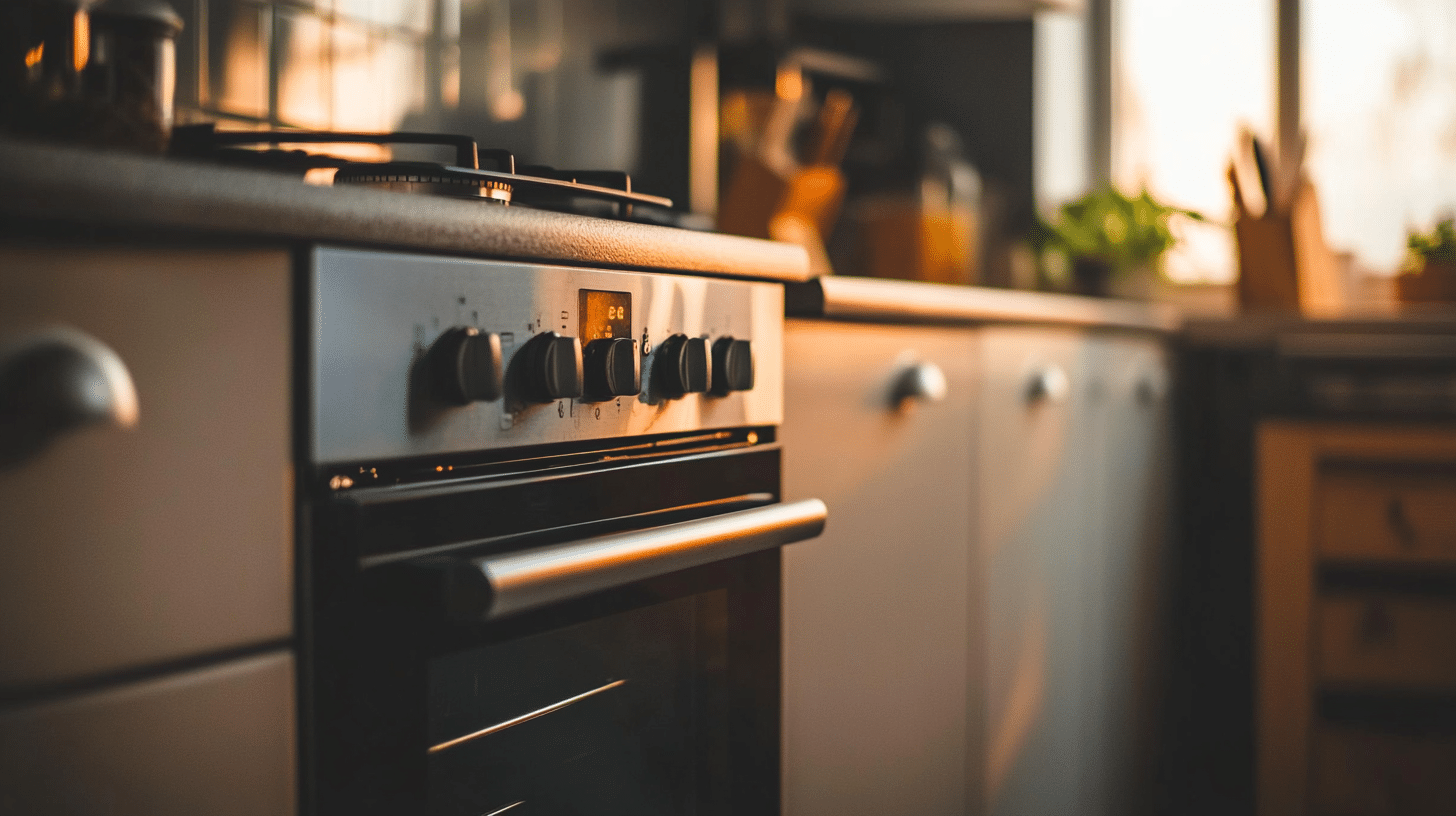
1. Heat Problems
Direct heat can hurt thermofoil cabinet surfaces. Keep them away from ovens and heating tools. Heat shields help protect cabinet areas near cooking spots. Without protection, the surface might start to peel off the base.
2. Repair Limits
Unlike wood, you can’t sand or paint thermofoil to fix damage. Chips and scratches often need full panel replacement. Small fixes don’t work well on this material. Once damaged, the whole cabinet front might need changing.
3. Time Concerns
These cabinets typically need replacement after 15 to 20 years. First, the vinyl covering may start to separate from the edges. Age can make the surface more likely to chip or peel. Regular upkeep helps, but it won’t stop eventual wear.
4. Weight Issues
Thermofoil cabinets weigh more than wood ones, making them harder to install alone. You might need extra support in your walls, and professional help is often necessary for installation.
5. Resale Value
Some home buyers prefer real wood cabinets, which might affect your house’s value when selling. Wood options often bring better returns on investment. Consider your long-term plans when choosing materials.
Cost and Expense Considerations
| CATEGORY | THERMOFOIL CABINETS |
|---|---|
| 1. Initial Purchase Price | It is around $300 per linear foot, lower than solid wood. Check for sales and bulk discounts. |
| 2. Installation Costs | $50 – $100 per cabinet box (professional); DIY setup requires special tools. Additional costs for handles and hardware. |
| 3. Maintenance Expenses | Low; regular cleaning with basic soap and water. There is no need for special wood oils or polishes. |
| 4. Repair Budgets | Minor repairs: $100 – $200 per door. Full kitchen replacement: $3,000 – $5,000. |
| 5. Long-Term Value | The average lifespan is 15 years with good care. Lower purchase costs offset a shorter lifespan than wood (30 years). |
Care and Maintenance of Thermofoil Cabinets
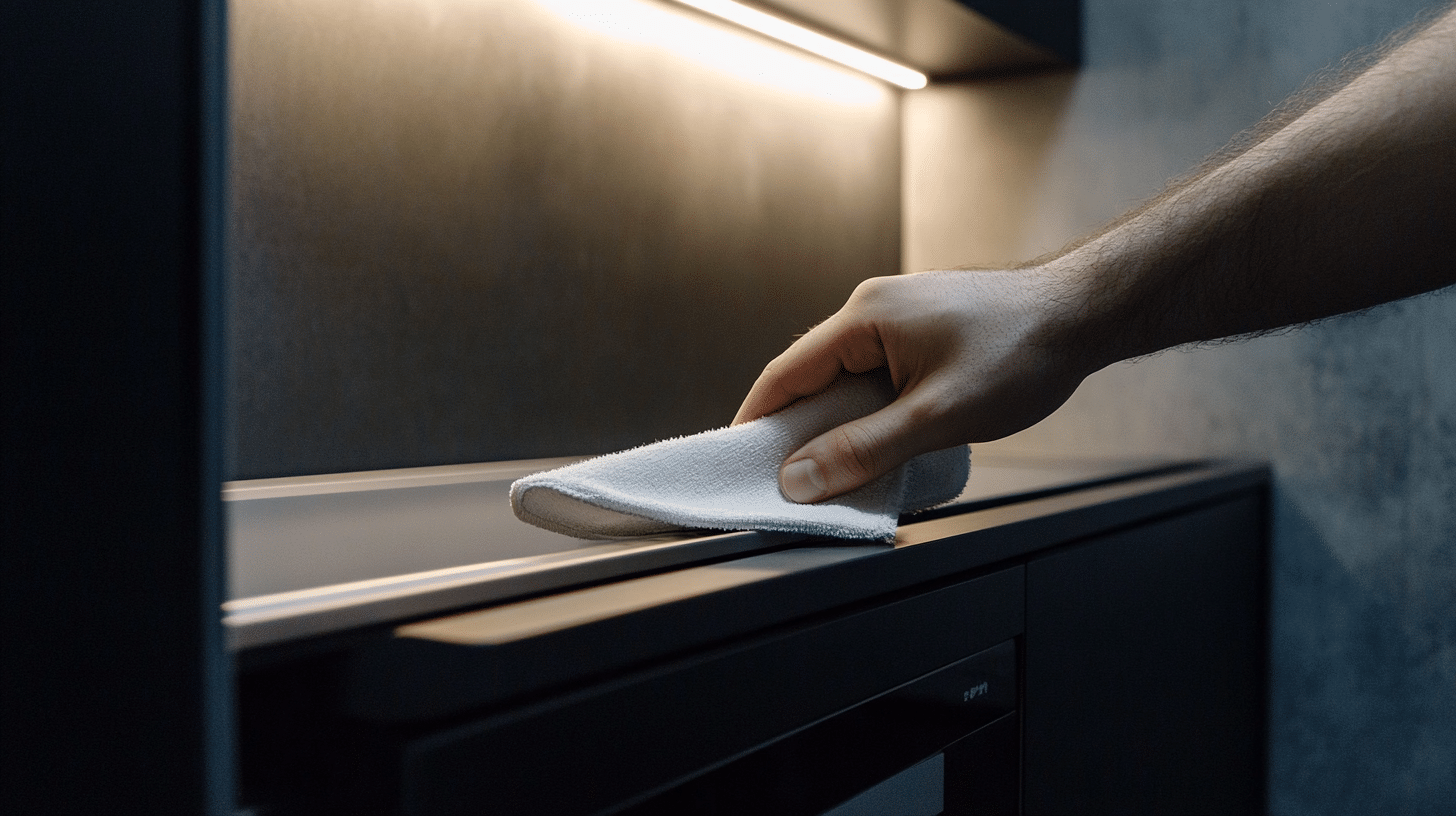
- Daily Cleaning Steps: Use soft cloths with mild soap and water. Never apply harsh scrubbers or strong chemicals. Pat surfaces dry after wiping them clean. Avoid leaving water spots on the finish.
- Heat Protection Methods: Install heat shields near ovens and toasters. Keep appliances six inches from cabinet surfaces. Use oven fans when cooking at high heat. Move heat-making tools away from cabinet faces.
- Moisture Control: Run bathroom fans during showers and after. Wipe water spots as soon as they appear. Quickly clean sink areas to keep them dry. Check under-sink spaces for leaks often.
- Damage Prevention: Close cabinets gently to prevent banging. Use door stoppers to control impact. Keep sharp objects away from surfaces. Watch for signs of peeling at the edges.
- Professional Care: Schedule yearly checks for loose edges. Have experts fix small issues quickly. Get professional advice for major repairs. Consider updates before problems grow large.
Common Problems and Solutions

1. Peeling Edges
The Problem: Cabinet edges start lifting from the base material. This often begins near heat sources or in damp areas.
FIX: Apply special cabinet glue for small lifts. Call experts for large peeling areas. Prevention works best through heat shields and moisture control.
2. Color Changes
The Problem: Some cabinet parts look different from others. Sun exposure and cleaning might cause uneven colors.
FIX: Use curtains to block direct sunlight. Keep cleaning methods the same for all surfaces. Replace badly faded doors if needed.
3. Water Damage
The Problem: Water gets under the surface and causes bubbling. This happens most near sinks and dishwashers.
FIX: Dry spills right away. Check sink seals often. Fix leaks as soon as you spot them. Replace damaged sections quickly.
4. Impact Marks
The Problem: Doors and drawers show dents or chips from daily use.
FIX: Add soft-close hinges to prevent banging. Use door stops and drawer guides. Replace badly damaged pieces to maintain looks.
5. Loose Handles
The Problem: Cabinet handles become wobbly or loose over time.
FIX: Tighten screws regularly. Replace stripped-out holes with repair kits. Install new hardware if needed.
Final Words
Thermofoil cabinets offer clear benefits for modern homes. They cost less than wood, clean up easily, and resist water damage well. These cabinets suit many home styles and last about 15 years with proper care.
Keep in mind some limits, too. Heat can damage surfaces, repairs often need a full replacement, and they weigh more than wood options. Your choice depends on your home’s needs and your budget plans.
Think about your kitchen or bathroom goals. Do you want low-cost, easy-care cabinets? Thermofoil might work well. Do you need something that will last 30+ years? Wood could suit you better.
Ready to start your cabinet project? Talk to local sellers about options. Compare prices and styles. Share your questions below or contact us for more details.
Frequently Asked Questions (FAQs)
Are Thermofoil Cabinets Any Good?
Yes, thermofoil cabinets are affordable, low-maintenance, and moisture-resistant. They offer a smooth finish but may not withstand heat, as well as wood or laminate.
Is Thermofoil Better Than Laminate?
Thermofoil and laminate offer durability and easy cleaning, but thermofoil is more moisture-resistant. Laminate is generally better near heat sources and offers broader design flexibility.
Can Thermofoil Be Repaired or Refinished?
Thermofoil cannot be easily repaired or refinished. Peeling or damage usually requires full panel replacement, which can be costly compared to spot repairs possible with wood or laminate.



